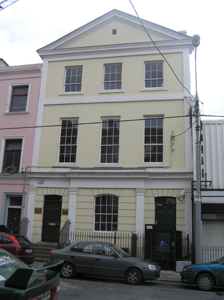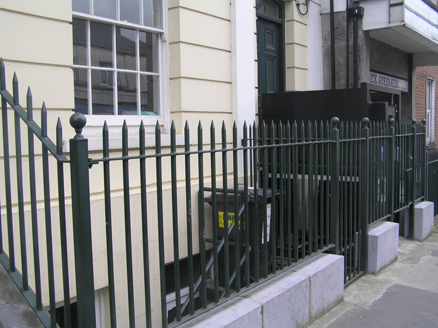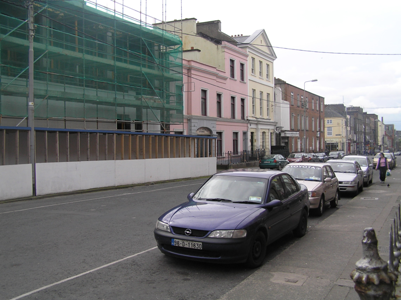Survey Data
Reg No
21518012
Rating
Regional
Categories of Special Interest
Architectural, Artistic, Historical, Social
Previous Name
Limerick School of Art
Original Use
Theatre/opera house/concert hall
Historical Use
Hall
In Use As
Unknown
Date
1820 - 1840
Coordinates
157621, 156780
Date Recorded
02/05/2005
Date Updated
--/--/--
Description
Attached three-bay three-storey over basement rendered building, built in 1856, with a pediment spanning the full-length of the façade. Pitched natural slate roof with a substantial rendered chimneystack with clay pots to both party walls. Heavy cornice to the pediment with lead flashing. Painted rendered walls with a tripartite projecting cornice to the ground floor. Rusticated render to the ground floor. With pilasters separating each bay. Square-headed window openings with limestone sills and replacement six-over-three and nine-over-six timber sash windows, c. 2002. Segmental-headed window opening to ground floor central bay with eight-over-eight timber sash window and a two-over-two timber sash to the basement elevation. Flanking camber-headed door openings to end bays with identical timber-panelled doors with central fillet moulding and brass furniture, opening onto a flight of limestone steps and modern steel railings on a new limestone plinth course enclosing the basement area. Disabled access lift replaces the steps to the west entrance bay. Large rubble limestone building to the rear associated with the Athenaeum.
Appraisal
This classical pedimented stuccoed building was constructed to the designs of John Fogarty, County Engineer, as the headquarters of Saint Michael's Parish Commissioners. It served as the town hall for Newtown Pery for twenty years. In 1854 it was purchased by the Limerick Athenaeum Society who with the aid of public subscription, built the adjoining Athenaeum Hall as a public lecture theatre. This building is designed in a restrained manner, without excessive detailing to distract from its pleasing classical proportions. In 1898 this building and the adjoining building came under the control of the Limerick Technical Instruction Committee and its successor the VEC. It stands as the focal point of Cecil Street, and together with the theatre structure to the rear, render it of great importance to this section of the Georgian city and has much historical and social importance to Limerick City.









